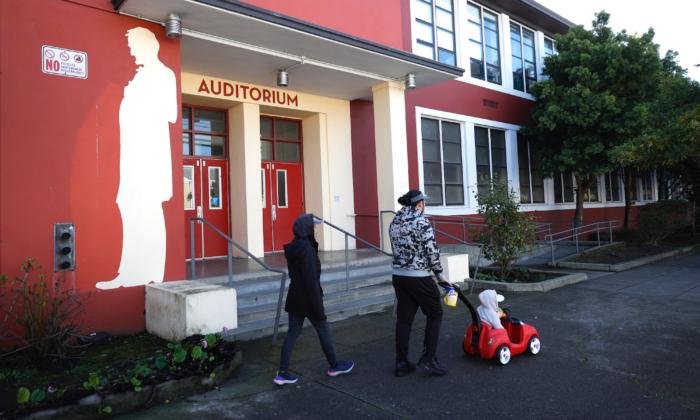As one might expect, the costliest and least defensible projects are concentrated in California.
Commentary
The Biden administration left Washington with
a queue of $64 billion in transit capital projects at various stages of the federal grant process. The new Trump administration should remove most (if not all) of these projects from grant consideration.
Beyond concerns about whether financially supporting local transportation projects is a legitimate federal function, the latest generation of transit capital grant contenders usually have costs well in excess of their benefits.
As one might expect, the costliest and least defensible
projects are concentrated in California, which accounts for half the project queue by cost. Perhaps the least defensible initiative is a 1.3-mile rail extension in San Francisco that weighs in at $8.25 billion. The new track would extend Caltrain commuter service from the outskirts of downtown to the largely empty Salesforce Transit Center.
Commuters alighting at the current San Francisco terminal can already reach the downtown core by transferring to light rail or buses or by biking or walking. So even if the extension is built, only a fraction of the 6,000 daily Caltrain commuters bound for San Francisco would likely use it.
The extension can only be justified if Caltrain were to become part of California’s high-speed rail project. But that initiative is bogged down and unlikely to get further support during the Trump years, so it will not be reaching the Bay Area any time soon, if ever.
An even more expensive Bay Area transit project is an extension of BART through downtown San Jose, California. This $12.75 billion project is expected to carry 32,000 daily passengers, according to the project
profile of the Federal Transit Administration (FTA). But the local transportation authority has a tendency to overestimate ridership, so the real number should be much lower.
Other states, both red and blue, have their share of transit boondoggles seeking federal funds. Cap Metro in Austin, Texas,
is trying to pull together $8.23 billion for a 10-mile light rail project that would hopefully carry 28,500 daily riders.
In Minnesota, the Met Council
hopes to extend its Blue Line light-rail service into Minneapolis’s northwest suburbs, despite opposition from some residents. Although the project is listed at the bargain price of $1.5 billion on the FTA dashboard, that number is stale and should see a radical upward revision if the project continues to progress through the grant process.
Finally, the East-West Gateway Council of Governments
is proposing a $1.1 billion, 5.8-mile light rail project for St. Louis. Although this project is a relative bargain compared with the others covered here, planners expect it to carry only 5,200 daily passengers. And this seems very optimistic, given the agency’s
previous overestimates of transit project ridership and St. Louis’s rapid population decline: The city
had only 282,000 residents in 2023 compared with 319,000 in the 2010 Census.
None of these projects should be eligible for federal grants, since they do not have sufficient expected ridership to justify the extra costs required by rail. Some of the routes may justify less costly bus rapid transit, but even that alternative would not make sense for downtown San Francisco, which is already saturated with transit.
As the current administration will be relying on the “Department of Government Efficiency” to identify spending cuts, these and other projects in the Federal Transit Administration’s queue should come under intense scrutiny. Although incoming Transportation Secretary Sean Duffy committed to spending funds authorized by the 2021 bipartisan infrastructure bill, Congress could limit transit project spending by not making further appropriations.
Incoming Department of Transportation (DOT) management should also consider some of our proposals for improving the grant funding process in this
recent Cato Institute study, “
Subsidizing Transport: How Much Do Taxpayers Pay for Rail, Road, and Air Travel?” Specifically, we recommend that each project be subject to rigorous cost-benefit analysis based on ridership estimates provided by disinterested third parties.
Projects that fail to provide positive net benefits should not be approved even if money is available. If there is more money than positive net benefit projects, DOT should hold onto the funds or return them to the Treasury.
Views expressed in this article are opinions of the author and do not necessarily reflect the views of The Epoch Times.







